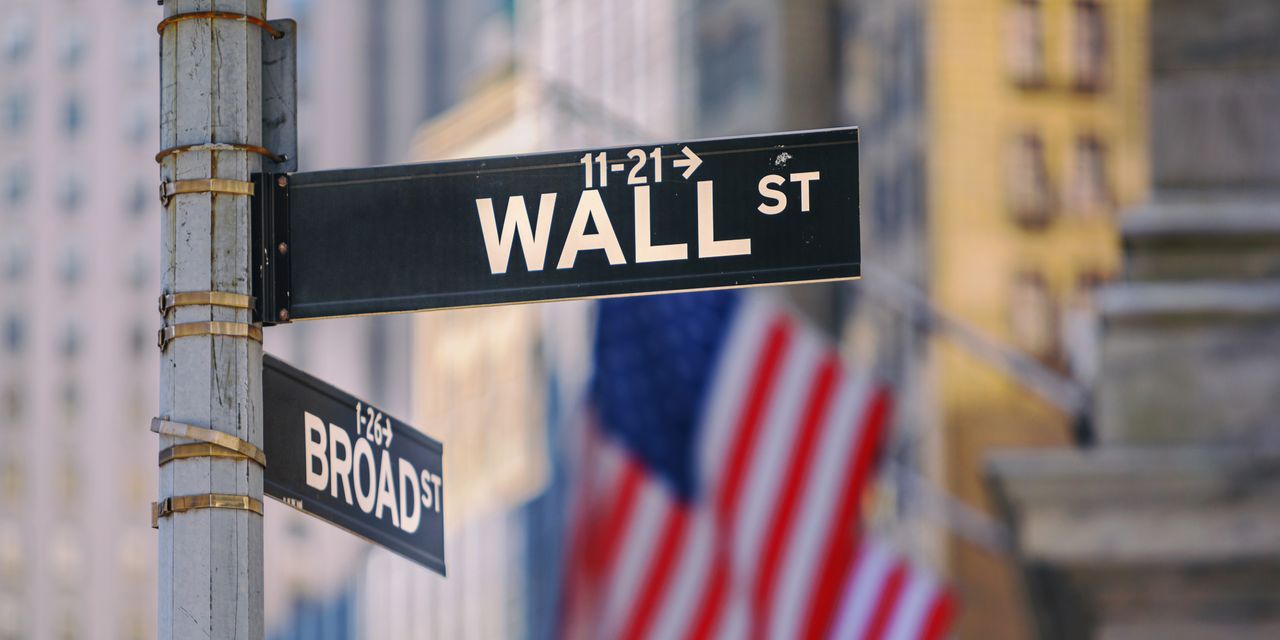U.S. stocks were trading mostly higher on Friday afternoon, with the S&P 500 index partially recovered from its biggest selloff since March.
However, both the S&P 500 and Nasdaq Composite remained on track to log a third-straight weekly decline as equities have been rocked by rising bond yields in the wake of the Federal Reserve meeting on Wednesday.
How stock indexes are trading
-
The Dow Jones Industrial Average
DJIA
was down 19 points, or 0.1%, at 34,049, losing a grip on earlier gains. -
The S&P 500
SPX
gained 7 points, or 0.2%, to 4,337. -
The Nasdaq Composite
COMP
rose 55 points, or 0.4%, to 13,279.
The S&P 500 fell 1.6% on Thursday, its biggest daily percentage-point decline since March 22, according to Dow Jones Market Data.
What’s driving markets
After two days of intense selling sparked by the Federal Reserve projecting its policy interest rate would remain above 5.0% well into next year, U.S. stocks appeared to be on steadier ground.
Still, analysts noted that the market’s recovery early Friday looked tepid after the worst stock-market rout since the aftermath of the collapse of Silicon Valley Bank in March.
“The fallout from Wednesday’s ‘higher for longer’ message from the U.S. Federal Reserve continues with Wall Street suffering its worst slump in six months with 10-year benchmark Treasury yields touching 4.5% for the first time since 2007 and the prospect of rate cuts next has been reduced to just 75 bps,” said Saxo Bank strategists in emailed commentary.
Rapidly rising Treasury yields have been blamed for much of the pain in stocks. This week, the yield on the 10-year Treasury note climbed to its highest level since October 2007. On Friday, yields were marginally lower, a sign that their upward march was taking a breather, offering some relief to global stocks. The 10-year yield
BX:TMUBMUSD10Y
was down five basis points on Friday afternoon at 4.43%.
Senior Fed officials who spoke Friday voiced support for the more aggressive monetary policy path signaled by Fed Chair Jerome Powell on Wednesday.
Boston Federal Reserve President Susan Collins said rates are likely to stay “higher, and for longer, than previous projections had suggested.” Fed Gov. Michelle Bowman said it’s possible the Fed could raise rates further to quell inflation. The latest Fed “dot plot,” released following the close of the central bank’s two-day policy meeting on Wednesday, showed senior Fed officials expect to raise rates once more in 2023.
Meanwhile, the S&P 500 is heading for a third straight week of declines, with its consumer-discretionary stocks on Friday posting the worst weekly performance among the index’s 11 sectors, with a 5% drop, FactSet data show, at last check.
“Markets weakened this week following an extended period of calm, as the hawkish tone adopted by Fed Chair Powell following the FOMC meeting caused the decline,” said Mark Hackett, Nationwide’s Chief of Investment Research, in emailed comments Friday. “Bears have wrestled control of the equity markets from bulls.”
The latest economic data on Friday showed some weakness in the U.S. services sector, while manufacturing activity recovered slightly but remained in contraction, according to S&P U.S. purchasing managers indexes.
Still the U.S. economy has been largely resilient despite a hawkish Fed, with “strong economic growth driving fears of continued inflation pressure,” said Hackett. “Simultaneous concerns that the economy is too strong and that developing clouds” such as strikes, a potential government shutdown, and student loan repayments, “will impact consumer activity,” he said.
Read: Government shutdown: Analysts warn of ‘perhaps a long one lasting into the winter’
Jamie Cox, managing partner at Richmond, Virginia-based wealth-management firm Harris Financial Group, said by phone on Friday that he’ll become concerned about the impact of a government shutdown on markets if it stretches for longer than a month.
“I’m only worried if it goes past a month,” said Cox, explaining he expects “little” economic impact if a government shutdown lasts a couple weeks.
Meanwhile, United Auto Workers President Shawn Fain said Friday that the union is expanding its strike to 38 General Motors Co.
GM,
and Stellantis NV’s
STLA,
auto-parts distribution centers in 20 states, hobbling the two carmakers’ repair network.
Companies in focus
-
Activision Blizzard Inc.
ATVI,
+1.69%
rose after the U.K. Competition and Markets Authority said that Microsoft Corp.’s
MSFT,
-0.56%
revised proposals to modify its Activision acquisition makes it possible for the $75 billion deal to be cleared. Under the revised deal, Activision would sell cloud-gaming rights to French videogame publisher Ubisoft Entertainment SA
UBI,
+4.47% ,
whose shares rose 3.5% in Paris. -
Chinese stocks were getting a boost, with e-commerce group Alibaba Group Holding Limited
BABA,
+4.74% ,
electric vehicle-maker NIO Inc.
NIO,
+0.59%
and ecommerce platform JD.com Inc.
JD,
+2.15%
seeing their shares rise. Friday saw Hong Kong’s Hang Seng Index
HK:HSI
close up 2.2% after two days of selling that took the index to its worst level in a month this week. As well, reports suggested Friday that China is considering a relaxation of rules that limit foreign ownership of publicly traded firms.
Steve Goldstein contributed to this report.
Read the full article here













Leave a Reply